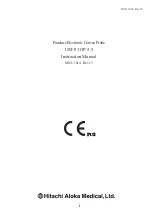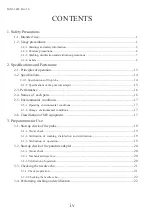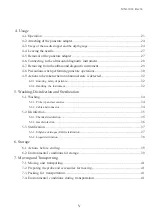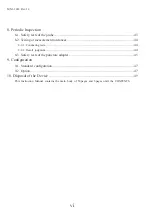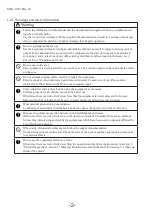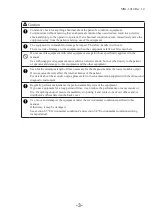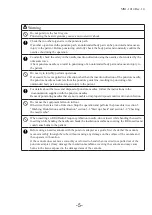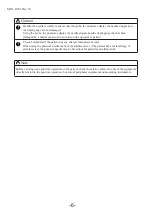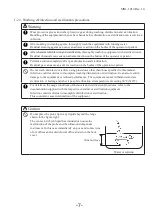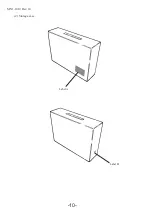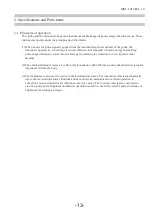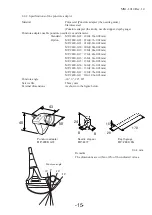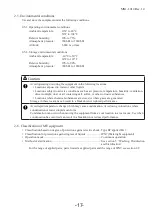
-5-
MN1-1014 Rev. 14
Warning
Do not puncture the heart region.
Puncturing the heart region may cause a micro electric shock.
Check that no other organs lie in the puncture path.
If another organ lies in the puncture path, an unintended body part can be punctured and cause an
injury to the patient. Before puncturing, carefully check the body parts and constantly confirm the
needle echo during the operation.
Constantly check the safety in the needle insertion direction using the needle echo rendered by the
ultrasonic wave.
A bent puncture needle can result in puncturing of an unintended body part and cause an injury to
the patient.
Do not try to forcibly perform operations.
If excessive force is applied in a direction other than the insertion direction of the puncture needle,
the puncture needle can deviate from the puncture guide line, resulting in puncturing of an
unintended body part and causing an injury to the patient.
For details about the reuse and disposal of puncture needles, follow the instructions in the
documentation supplied with the puncture needles.
Reuse of puncturing needles that are not reusable or improper disposal could result in an infection.
Do not use the equipment fallen on to floor.
Otherwise, there is a risk of infection. Stop the operation and perform the procedure in section 5
"Washing, Disinfection and Sterilization" section 3-1 "Start up check" and section 3-2 "Checking
the needle echo".
When inserting an RFA(Radio Frequency Ablation) needle, do not insert while bending the needle.
Inserting while bending the needle can break the insulation membrane covering the RFA needle and
could cause burns to the patient.
Before using a needle cannula with the puncture adapter as a guide, first check that the cannula
moves smoothly through the tube without causing any damage on the surface of the cannula and
then operate with caution.
If the cannula does not move smoothly or is forced to bend when inserted in or pulled out of the
puncture adapter, it may damage the insulation membrane covering the cannula and may cause
burns to the tissue exposed to the damaged area of the cannula.
Summary of Contents for UST-9113P-3.5
Page 2: ...MN1 1014 Rev 14 ii ...
Page 16: ... 10 MN1 1014 Rev 14 2 Storage case Label A Label B ...
Page 18: ... 12 MN1 1014 Rev 14 ...
Page 24: ... 18 MN1 1014 Rev 14 ...
Page 46: ... 40 MN1 1014 Rev 14 ...
Page 48: ... 42 MN1 1014 Rev 14 ...
Page 52: ... 46 MN1 1014 Rev 14 ...
Page 54: ... 48 MN1 1014 Rev 14 ...

